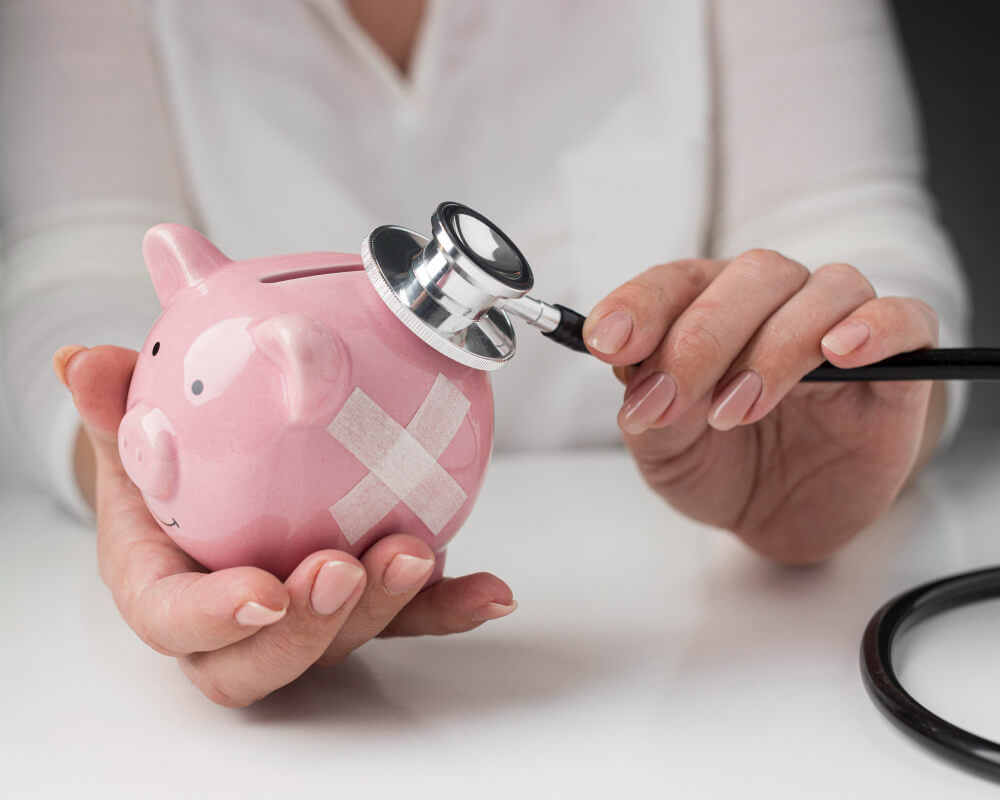When And How To Access Your Emergency Savings Fund?

Financial emergencies can strike anytime, leaving you feeling vulnerable and anxious. That’s where an emergency savings fund comes to the rescue.
It’s your financial safety net, designed to provide peace of mind during turbulent times. However, knowing when and how to access your emergency savings can be as critical as having one.
In this article, we’ll discuss the circumstances under which tapping into your emergency savings is appropriate and when you should consider alternative options.
The Purpose Of Emergency Savings
Before we dive into the specifics, let’s understand the primary purpose of an emergency savings fund. It’s a cushion that helps you weather unexpected financial constraints without borrowing or dipping into long-term investments. It covers essential expenses such as medical bills, car repairs, or urgent home repairs when life throws you a curveball.
When To Use Your Emergency Savings
1. Medical Emergencies:
Health issues often come unannounced. If you or a family member faces a medical emergency not covered by insurance, using your emergency savings is a wise choice. It ensures you can access the necessary care without accumulating debt.
2. Job Loss:
If you unexpectedly lose your job, your emergency savings can act as a bridge until you find a new source of income. Aim to cover at least three to six months’ worth of living expenses to provide a financial cushion during unemployment.
3. Home Repairs:
When your roof starts leaking, or your furnace breaks down in the dead of winter, you’ll be grateful for your emergency savings. Home repairs can be expensive, and using your savings can prevent further damage to your property. To assist you with the home repairs, contact a Handyman Near me in Carlisle, PA, or in a location more suitable for you.
4. Car Troubles:
Reliable transportation is essential for many aspects of life. When your car needs repairs or needs to be replaced, your emergency fund can help you stay mobile.
5. Unforeseen Expenses:
Life is full of surprises, some of which come with a hefty price tag. From unexpected legal fees to urgent travel plans, your emergency savings can cover the unexpected.
6. Natural Disasters:
Mother Nature can be unpredictable, and natural disasters such as hurricanes, earthquakes, or floods can cause significant damage to your home and property. Emergency savings can be a lifeline in such situations, helping you cover temporary accommodation, repairs, and other unexpected expenses that arise after a natural disaster.
7. Family Emergencies:
Sometimes, unforeseen family emergencies may require your immediate financial support. Whether it’s helping a family member in crisis, covering unexpected travel expenses to be with loved ones, or assisting with a sudden financial need within your extended family, having an emergency fund can allow you to provide assistance without jeopardizing your own financial stability.
When To Consider Alternatives
A. Simple Loans:
Sometimes, a financial emergency may require more funds than your emergency savings can provide. In such cases, consider a simple loan from a trusted lender. These loans typically have straightforward terms and can be repaid over a reasonable period, reducing the immediate financial burden.
B. Credit Cards:
While not ideal, credit cards can temporarily solve minor emergencies. Exercise caution regarding elevated interest rates and formulate a strategy for promptly settling the outstanding balance to avoid accumulating debt.
C. Family And Friends:
In certain situations, turning to family or friends for financial assistance may be an option. Ensure you have a clear repayment plan in place to maintain healthy relationships.
D. Liquidating Non-Essential Assets:
If your emergency requires a substantial amount of money, consider selling non-essential assets like collectibles, jewelry, or electronics. This can provide a quick infusion of cash to address the crisis.
E. Government Assistance Programs:
Depending on the nature of your emergency, you may qualify for government assistance programs. For instance, during economic hardship, unemployment benefits, food assistance, or housing aid may be available. Investigate these options to see if they can provide temporary relief without depleting your savings.
F. Insurance Claims:
If the emergency involves damage to your property or a significant loss, check your insurance policies. Home insurance, car insurance, and health insurance may cover some or all of the expenses related to the emergency. Filing a claim can help offset the financial burden.
G. Part-Time Work or Gig Economy:
If the emergency doesn’t completely disrupt your ability to work, consider temporarily taking on part-time or gig economy jobs to supplement your income. This can help you cover expenses without taking loans or depleting your savings.
Maintaining Your Emergency Savings
Accessing your emergency savings should be a last resort. To preserve your peace of mind and financial security:
1. Replenish Promptly:
Once you’ve used your emergency funds, make it a priority to replenish them as soon as your financial situation stabilizes. Set a monthly savings goal to prepare for the next unexpected event.
2. Regularly Review And Adjust:
Life circumstances change, and so should your emergency fund goals. As your income or expenses evolve, adjust the size of your emergency savings accordingly.
3. Invest Wisely:
While your emergency fund should be easily accessible, ensuring it doesn’t lose value over time is also essential. Consider placing your funds in a high-yield savings account or a low-risk investment option to keep pace with inflation.
4. Automate Savings:
Establish automatic transfers from your checking account to your emergency fund, treating your savings as an obligatory monthly commitment to ensure a steady and ongoing buildup of your fund.
5. Avoid Temptation:
It’s important to resist the temptation to dip into your emergency savings for non-emergencies. Create a mental barrier between your regular spending and your emergency fund so you only use it when truly necessary.
6. Emergency Fund Categories:
Consider dividing your emergency fund into categories. For instance, have a separate sub-fund for medical emergencies, one for job loss, and another for home or car repairs. This can help you allocate resources more effectively and avoid depleting the entire fund for a single type of emergency.
7. Financial Advisor Consultation:
Consider consulting with a financial advisor to create a comprehensive financial plan that includes emergency savings and investments. They can help you develop a strategy that aligns with your long-term financial goals.
In conclusion, preserving peace of mind during financial emergencies requires careful consideration of when and how to access your emergency savings.
While simple loans and alternative options can help bridge the gap, maintaining a robust emergency fund is your first line of defense against life’s unexpected challenges. By striking the right balance between accessing your savings and replenishing them, you can navigate financial storms with confidence and security.
Read Also:
























